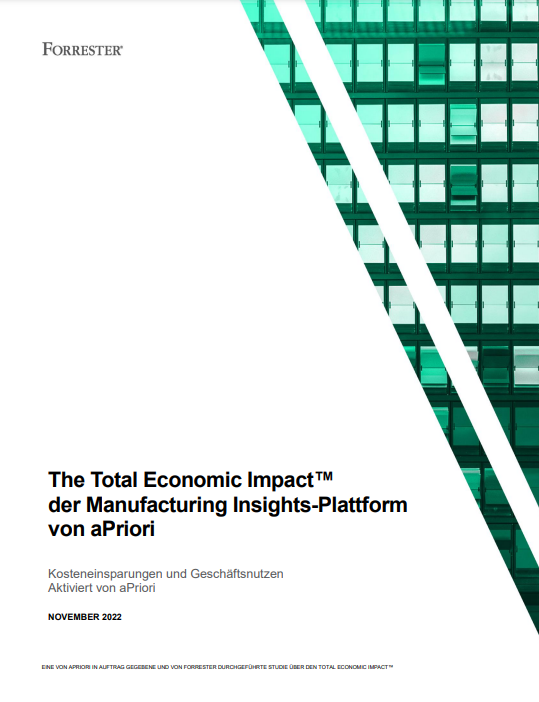How to Use Supply Chain Collaboration to Minimize Disruption
Key Takeaways:
- Effective supply chain collaboration propels customer satisfaction by ensuring timely delivery of high-quality products
- Collaborative digital manufacturing technology streamlines supplier negotiations and enhances forecasting accuracy
The Full Article:
PwC’s Global Crisis and Resilience Survey reveals that 91% of companies have reported experiencing supply chain disruptions, driven by factors like inflation, in the past two years. Survey results also show that 76% of companies believe that these disruptions had a medium to high impact on their business.
One way manufacturers are addressing supply chain risk is to foster deeper partnerships with select suppliers. This includes manufacturers and suppliers collaborating throughout the new product development (NPD) process and establishing agreements for critical materials, components, and production capabilities to meet market demand.
In Japan, this business model is so widespread that the term keiretsu describes close and effective collaboration in product and supplier (provider) relationships, with a focus on continuous improvement and shared success. According to McKinsey, businesses that adopt strategic supplier relationships can nearly double their performance compared to industry competitors.
Explore how you can achieve successful supply chain collaboration amid market uncertainty:
- The Impact of Inflation Factors and Geopolitical Risks on Supply Chain Management
- Rethink Your Supplier Relationship Management Strategy to Address Risk
- 5 Ways to Foster Long-Term Resilience and Improve Supply Chain Performance
- Cut the Procurement ‘Red Tape’ and Boost Supplier Collaboration With Digitalization
1. The Impact of Inflation Factors and Geopolitical Risks on Supply Chain Management
Companies must understand the potential impact of supply chain changes, including materials and production, due to shifts in global manufacturing capacity. In her Manufacturing Insights Conference presentation, Jody Markopoulos, former Chief Supply Chain Officer at Baker Hughes, emphasized that companies need to address potential risks, such as:
- Are there geopolitical risks due to unrest in a sourcing country?
- Do tariffs affect your exports or imports?
- Is new global capacity needed to serve an existing market or penetrate a new one?
- Do customers require country-specific supplies or local content?
2. Rethink Your Supplier Relationship Management Strategy to Address Risk
Rethink your supplier relationship management (SRM) to address fluctuations in your organization’s risk profile. This process includes assessing each supplier’s impact on your organization and identifying ways to boost performance. Check out our comprehensive definition of SRM to learn more.
As you diversify your supply base, re-shore targeted operations, or take risk mitigation steps, your criteria for key suppliers may change. The Harvard Business Review (HBR) proclaims that the era of “far-flung global supply chains is probably over,” with manufacturers shifting toward a regional sourcing and production model. For instance, Stanley Black & Decker sources materials and parts near its factories, adjusting the prioritization of tier-one and tier-two suppliers compared to multinational brands that source products in Asia.
Review your current supply chain priorities to ensure they align with the capabilities of your tier-one and tier-two suppliers. Additionally, conduct an audit of your supply base for resiliency, which can include:
- Determining whether there is a regional overreliance on suppliers and redistribute as necessary
- Addressing shipping and logistics roadblocks (e.g., the Panama Canal blockage and pileup by procuring and manufacturing products in regions that can ship directly to ports with capacity)
- Evaluating alternative countries for sourcing and manufacturing
- Identifying new suppliers and evaluating alternative manufacturing methods
Uncover the benefits of supply chain collaboration through digital factory implementation.
3. 5 Ways to Foster Long-Term Resilience and Improve Supply Chain Performance
Manufacturing companies frequently enter supplier partnerships to secure scarce materials or manufacturing capabilities, but they don’t always evolve these relationships. Consider targeting select tier-one suppliers to expand relationships in areas that include:
- Creating a Blueprint for Mutual Success: Reexamine how to incentivize your tier-one suppliers. Consider long-term contracts and investments in supplier equipment to gain a competitive edge as the original equipment manufacturer (OEM).
- Enlisting Key Suppliers During Product Design: In pre-award situations, manufacturing companies and suppliers often collaborate to improve designs and processes. However, after finalizing contract pricing and reaching a certain design phase, they usually work independently. Alternatively, during the latter stages of the NPD process, a supplier is selected with limited input due to the high costs of making late-stage design changes. OEMs that involve key suppliers from the beginning to the product launch can unlock hidden value.
- Fostering Transparency: Understanding each partner’s capabilities is central to a collaborative relationship. OEMs can work more effectively with their vendors when they have a full view of the suppliers’ capacity. Manufacturing companies can design products with a supplier’s specific production capabilities in mind. They can use end-to-end digital factories to simulate production runs, identify potential issues, evaluate cost structures, and select optimal manufacturing processes to fuel greater profitability.
- Updating Your Cost Models: Reevaluate blended rates with your supplier through open-book pricing and calibrate material costs using should cost market data. Identify opportunities to enhance machine utilization, guide material decision-making, and drive cost optimization in the early design stages with design for manufacturability (DFM). This approach is crucial since the initial design process locks in 80% of costs.
- Measuring Supply Chain Sustainability: A 2024 EY CEO Survey reported that approximately 54% of global CEOs prioritize sustainability. Boardrooms, regulators, investors, and key stakeholders are expected to increase their sustainability pressures. Proactive manufacturers are measuring their carbon dioxide equivalent (CO2e) emissions across their supply chain (Scope 3) to implement sustainability solutions more effectively.
4. Cut the Procurement ‘Red Tape’ and Boost Supplier Collaboration With Digitalization
Advances in digitalization (Industry 4.0) are bringing new levels of efficiency and automation to the factory floor. However, the procurement and quoting process is still overwhelmingly manual. To underline this point, an SAP survey revealed that procurement teams spend more than half of their time on transactional activities.
Forward-thinking manufacturers digitalize their cumbersome and time-consuming supplier qualification and request for quote (RFQ) management processes. Manufacturers prioritizing secure and digital information sharing can quickly get suppliers up and running quickly. Effective approaches to fast-track manufacturer and supply chain collaboration include:
- Going Digital: Working from written (2D) manufacturing part information requires suppliers to recreate the design in 3D computer-aided design (CAD) software. This inefficient process doesn’t provide suppliers with the detailed product and manufacturing information (PMI) required for precise quoting. Instead, manufacturing companies that use the digital twin and digital thread in the RFQ process save time and benefit from increased quoting accuracy.
- Automating Procurement: Adopting “Zero RFQ” capabilities allows companies to send purchase orders (POs) directly to preferred and suitable suppliers automatically, resulting in shorter product timelines. Once both parties have established a type of master service agreement (MSA), OEMs can execute quoteless sourcing with trusted suppliers, averting lengthy negotiations for each project contract.
- Unifying the Entire Process: Product brands often provide some digital sharing via PLM tools and other critical systems, such as enterprise resource planning (ERP). But they also have gaps between their product system of record and the procurement system of engagement. This break in the digital thread requires teams to retrieve information manually – such as raw material sources and standard component prices. Digitalizing procurement operations provides authorized users with robust product data from all systems connected by the digital thread. This, in turn, helps to accelerate time to market and reduce risk.
- Simplifying Cross-Functional Collaboration: Using a digital platform replaces cumbersome and unwieldy email chains. Manufacturers and suppliers can use real-time manufacturing collaboration software, such as aP Workspace, to access critical product information and enhance project visibility, traceability, and coordination.
These capabilities only scratch the surface of the power of a digital manufacturing insights solution such as aPriori. With aPriori, users can unlock the value of their digital twins with automated manufacturing insights that include:
- Product Cost Management: Cost specialists calculate costs for new designs without waiting for supplier quotes or reviews. aPriori’s precise cost insights enable sourcing managers to drive supplier negotiations with fact-based data, fostering collaborative business operations that reduce component expenses.
- Sustainability: Product teams employ aPriori’s sustainability insights to evaluate design tradeoffs, ensuring recyclability and serviceability. By differentiating their products sustainably, they gain a competitive advantage and generate long-term value.
- Design Guidance: Designers recognize the impact of difficult or impossible-to-manufacture features early and improve manufacturing feasibility to reduce manufacturing risks and costs.
- Manufacturing Optimization: Users can automatically select feasible machines and preferred tools with the lowest overhead rate for specific processes and operations using smart selection modules.
Discover more about how aPriori boosts profitability, sustainability, and supply chain collaboration.
Bolster Supply Chain Collaboration for a Competitive Advantage
Prioritizing effective supply chain collaboration allows manufacturing companies to navigate today’s complexities. Strong and meaningful partnerships with suppliers help improve negotiations, minimize disruptions, and improve customer satisfaction. Further, digital transformation streamlines workflows, enabling manufacturers to quickly capitalize on new cost and carbon savings opportunities.
Discover How to Achieve a 603% ROI With Your aPriori Investment









